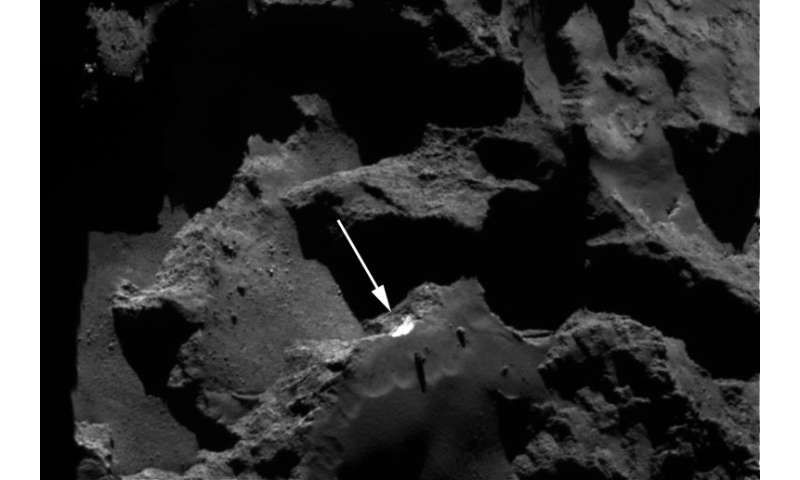Best of Last Week – A comet landslide, evading Heisenberg principle and using natural brain opioids to combat anexiety

(ScienceX)—It was a good week for space science as a team working on data sent back to Earth in 2015 discovered that the Rosetta comet orbiter had filmed a deep-space landslide on the surface of 67P/Churyumov-Gerasimenko—over 2000 tons of rubble fell off a cliffside. Also, it appears Curiosity might night not be able to move much longer as a team at NASA found breaks in the Mars rover wheel treads—the rover has driven nearly 10 miles since landing in 2012. Another team at NASA reported that a Mars volcano and Earth's dinosaurs went extinct about the same time—about 50 million years ago. Also, a team at Goddard Space Flight Center studying data from the Hubble Telescope reported on observations of a gravitational wave kicking a monster black hole out of a galactic core—it was the largest black hole ever observed to have been booted from its central home.
In other news, a team at the University of Wisconsin reported that they created double filters that allow for tetrachromatic vision in humans—they developed a pair of glasses that allowed the wearer to see more colors in the blue range. Also, a team of engineers at the University of Utah developed a non-toxic material that generates electricity through hot and cold—perhaps paving the way for generating enough electricity to power a body sensor through jewelry. A team at the University of New South Wales unveiled a giant leap for anti-aging—a way to make a drug that could reverse aging and repair DNA. They believe they have found a major part of the molecular process that allows cells to fix damaged DNA. And a team at the Institute of Photonic Sciences headquartered in Spain found a way to evade the Heisenberg uncertainty principle—they developed a new technique to hide quantum uncertainty that could improve the sensitivity of instruments such as MRIs and atomic clocks. Also, a team at UC Davis offered a new twist on the sofa problem that stumps mathematicians and furniture movers—they used mathematics and 3-D printing to find solutions for the largest sofa that can be turned 90 degrees in a hallway.
And finally, if you are someone who feels anxious all the time, there may be help on the way as a team at the University of Sydney has found that boosting natural brain opioids may be a better way to treat anxiety—rather than giving people drugs to combat the disorder itself.
© 2017 ScienceX